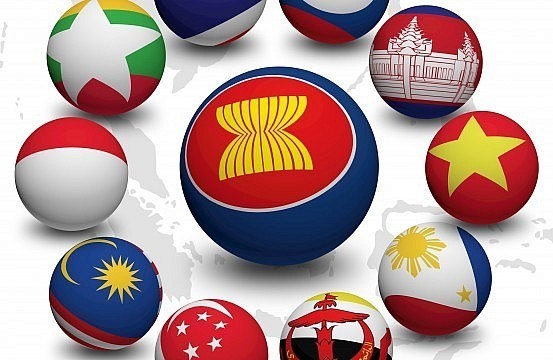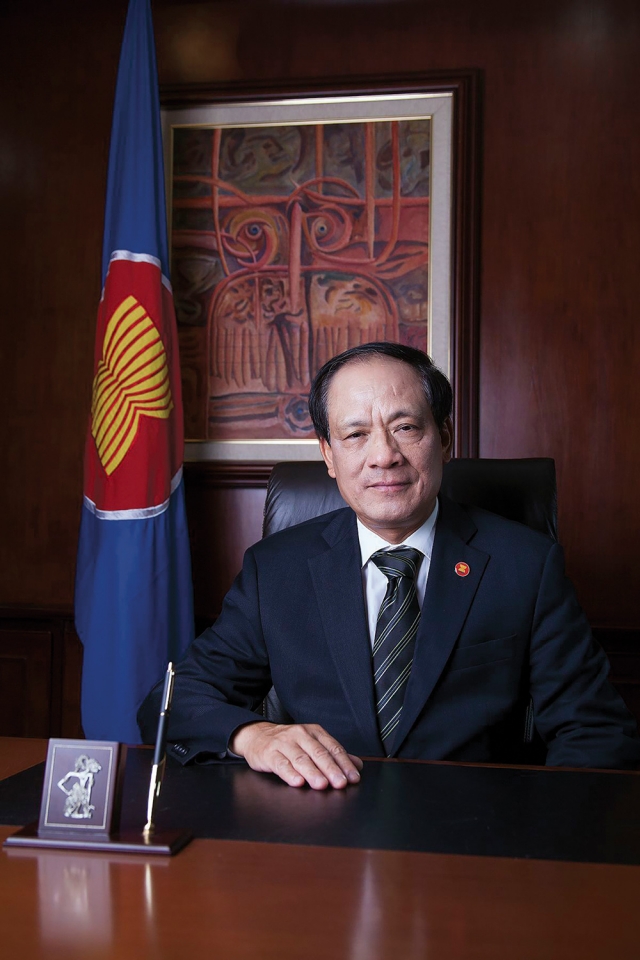
Overarching objective of ASEAN is to build a people-centered community
Latest
 |
| ASEAN connectivity has achieved considerable progress. (Photo: PA) |
A vision for unity in diversity
According to Ambassador Le Luong Minh, from a fledgling Association born in least-developed Southeast Asia characterized by tensions among its very members and major power’s involvement and confrontation, ASEAN has preserved and kept developing over the past 55 years and now widely recognized as one of the most successful regional organizations. When the Foreign Ministers of the five founding members signed the 1967 Bangkok Declaration to establish ASEAN with a minimal immediate objective of maintaining security, few observers believed ASEAN would survive and attain achievements as great as those reflected today on all three key dimensions: maintaining regional peace and security, promoting economic integration, and building institutions.
 |
| Ambassador Le Luong Minh, Secretary-General of ASEAN (2013-2018), former Deputy Minister of Foreign Affairs. (Photo: QT) |
Ambassador Le Luong Minh emphasized that the forward-looking strategic vision outlined in the Bangkok Declaration constituted a solid premise for ASEAN member states, different in political systems, economic structures and religious belief but bounded together by close historical and cultural ties, to thrive beyond themselves, respect and leverage on their difference and sucessfully built the ASEAN Community of unity in diversity.
That vision, further developed in Vision 2020 adopted in 1977 on the basis of reviewing ongoing developments and prospects of globalization in a more inter-dependent world in the following decades, was key to the successful implementation of the ASEAN Community Roadmap which included the three ASEAN Political-Security Community, ASEAN Economic Community and ASEAN Socio-Cultural Community Blueprints, the Initiative for ASEAN Integration, and the Master Plan on ASEAN Connectivity, as well as the formation and maturity of ASEAN-led regional machanisms, leading to an important milestone, which was the official establishment of the ASEAN Community in 2015.
Within the ASEAN Community today, in Ambassador Le Luong Minh’s opinion, peaceful relations among member states are sustainable; intra-ASEAN wars have become unimaginable; differences and disputes are largely contained or resolved through regional consultative and regulatory mechanisms, and not allowed to become hot spots that could escalate into conflicts.
Moreover, in all three dimensions-physical, institutional and people-to-people, ASEAN connectivity has achieved considerable progress as citizens of member states may travel freely within the whole bloc, and engage in broad exchanges and practical cooperation in almost all spheres of social life. Through an ASEAN-led mechanism, ASEAN has been playing a central role in maintaining a strategic balance in the region, bringing in to full play the momentum and scope of its relations with major powers, who may be fierce competitors between or among themselves but remain important partners of ASEAN, contributing to the building of a rules-based regional order.
Upholding of ASEAN centrality
To consolidate the achievements, according to Ambassdor Le Luong Minh, ASEAN Community Vision 2025 is oriented toward building a peaceful, stable, resilient and integrated Community with enhanced capacity to effectively respond to challenges; promoting global integration; playing a central role in shaping regional security structure; maintaining extensive relations with external partners; and making contributions to the promotion of global peace, security, stability and sustainable development.
“With people placed at its core, the overarching objective of the three Political-Security, Economic and Social-Cultural Community Blueprints is to build and strengthen a people-centered community”, Ambassador Le Luong Minh said.
The Former Deputy Minister of Foreign Affairs highlighted that in order to realize ASEAN Community Vision 2025, ASEAN needs to make still greater efforts. It is imperative to develop a culture of compliance through capacity building, harmonization of national legal systems, to enhance human and financial resources required for implementation and coordination agencies and mechanisms, especially the ASEAN Secretariat.
In a Community where a prominent identity is diverse, each member state must know how to overcome itself, balance national interests with the shared interests of the Community, thus contributing to the upholding of ASEAN centrality so that each member and ASEAN as a whole shall act as active partners rather than as pawns on the strategic chessboard of any exteral force.
“ASEAN centrality should be understood as that, in taking any action, ASEAN will always base itself on its own legitimate interests, rather than just standing in the middle or between external powers”, Ambassador Le Luong Minh explained.
It is also time that appropriate actions be taken to update the ASEAN Charter to allow more flexible applications of the principle of consensus, which, while continuing to leave no member behind, will not prevent the Community from moving forward.












